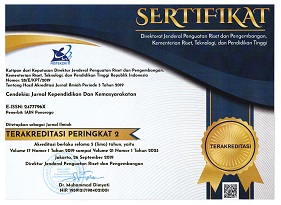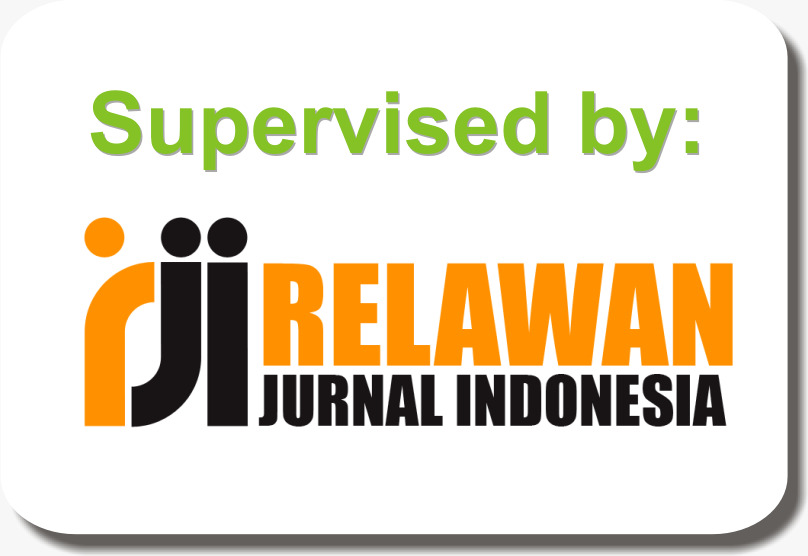Vocabulary Exposure to Islamic Institute Students Through an EFL Coursebook
DOI:
https://doi.org/10.21154/cendekia.v1i1.3506Keywords:
vocabulary, vocabulary exposure, vocabulary learning, EFL, coursebooksAbstract
The importance of vocabulary education in second and foreign language learning cannot be overstated. Teachers face a complex problem in teaching vocabulary because the English language contains hundreds of thousands of words, making it difficult to determine what to teach first. During their first semester at IAIN Ponorogo, students are exposed to English terminology by using a textbook required for English classes. The research aims to answer the following questions. They are 1) what are the coursebook's token types and sizes? (2) how many tokens, types, and word families are introduced in the coursebook? (3) what are the coursebook's vocabulary demands? (3) what vocabulary learning opportunities are offered in the coursebook? This study employed a corpus-based approach, and the analysis was carried out using RANGE, computer software. According to the findings, language learners who followed the coursebook were exposed to about 1,164-word families. Language learners need more vocabulary exposure from other sources to supplement the Nation's recommendation of focusing on the 2,000 most commonly used words.
References
Bauer, Laurie, and Paul Nation. “Word Families.” International Journal of Lexicography 6, no. 4 (1993): 253”“79.
Brown, Dale. “What Aspects of Vocabulary Knowledge Do Textbooks Give Attention To?” Language Teaching Research 15, no. 1 (2011): 83”“97.
Coxhead, Averil. “A New Academic Word List.” TESOL Quarterly 34, no. 2 (2000): 213”“38.
””””””. An Academic Word List. Vol. 18. School of Linguistics and Applied Language Studies, Victoria University of Wellington, 1998.
Davies, Mark, and Timothy L. Face. “Vocabulary Coverage in Spanish Textbooks: How Representative Is It.” In Selected Proceedings of the 9th Hispanic Linguistics Symposium, 132”“43. Citeseer, 2006.
Goulden, Robin, Paul Nation, and John Read. “How Large Can a Receptive Vocabulary Be?” Applied Linguistics 11, no. 4 (1990): 341”“63.
Hirsh, David, and Paul Nation. “What Vocabulary Size Is Needed to Read Unsimplified Texts for Pleasure?” Reading in a Foreign Language 8, no. 2 (1992): 689”“96.
Laufer, Batia, Paul Meara, and Paul Nation. “Ten Best Ideas for Teaching Vocabulary.” The Japan Association for Language Teaching 29, no. 7 (2005): 3”“6.
Leech, Geoffrey Neil. “100 Million Words of English: The British National Corpus (BNC).” Language Research 28, no. 1 (1992).
Miller, Don. “ESL Reading Textbooks vs. University Textbooks: Are We Giving Our Students the Input They May Need?” Journal of English for Academic Purposes 10, no. 1 (2011): 32”“46.
Milton, James. “Measuring Second Language Vocabulary Acquisition.” In Measuring Second Language Vocabulary Acquisition, Vol. 45. Multilingual Matters, 2009.
Milton, James, and Thomaï Alexiou. “Vocabulary Input, Vocabulary Uptake and Approaches to Language Teaching.” The Language Learning Journal 40, no. 1 (2012): 1”“15.
Moghadam, Soodeh Hamzehlou, Zaidah Zainal, and Mahsa Ghaderpour. “A Review on the Important Role of Vocabulary Knowledge in Reading Comprehension Performance.” Procedia-Social and Behavioral Sciences 66 (2012): 555”“63.
Nation, I. S. P. “A Study of the Most Frequent Word Families in the British National Corpus.” Vocabulary in a Second Language: Selection, Acquisition, and Testing 10 (2004): 3”“13.
Nation, Ian SP. Learning Vocabulary in Another Language. Cambridge: Cambridge University Press, 2022.
Nation, Paul. “Language Education”“Vocabulary.” Encyclopedia of Language and Linguistics 6 (2006): 494”“99.
Nation, Paul, and A. Coxhead. “Range and Frequency: Programs for Windows Based PCs.” Computer Software Instructions, Wellington, NZ: School of Linguistics and Applied Language Studies, Victoria University, 2002.
Nurweni, Ari, and John Read. “The English Vocabulary Knowledge of Indonesian University Students.” English for Specific Purposes 18, no. 2 (1999): 161”“75.
O’Loughlin, Richard. “Tuning in to Vocabulary Frequency in Coursebooks.” RELC Journal 43, no. 2 (2012): 255”“69.
Read, John. “Measuring the Vocabulary Knowledge of Second Langauge Learners.” RELC Journal 19, no. 2 (1988): 12”“25.
Rem-Yuan Lyu, Lee-Feng Chien’, Shiao-Hong Hwang, Hung-Yun Hsieh, and Rung-Chiuan Yangz. “Golden Mandarin (III)””A User-Adaptive Prosodic-Segment””Based Mandarin Dictation Machine for Chinese Language with Very Large Vocabulary,” 1995, 57”“60.
Richards, Jack C. The Role of Textbooks in a Language Program. Cambridge: University Press Cambridge, 2001.
Richards, Jack C., Jonathan Hull, and Susan Proctor. Interchange: English for International Communication 1: Student’s Book. 4th ed. Cambridge: Cambridge University Press, 2013.
Schmitt, Norbert. Researching Vocabulary: A Vocabulary Research Manual. New York: Springer, 2010.
””””””. “Size and Depth of Vocabulary Knowledge: What the Research Shows.” Language Learning 64, no. 4 (2014): 913”“51.
Thornbury, Scott. How to Teach Vocabulary. Essex: Pearson Education Limited, 2002.
Van Zeeland, Hilde, and Norbert Schmitt. “Incidental Vocabulary Acquisition through L2 Listening: A Dimensions Approach.” System 41, no. 3 (2013): 609”“24.
West, Michael. “A General Service List of English Words with Semantic Frequencies and a Supplementary Word-List for the Writing of Popular Science and Technology.” Longmans, Green & Company, 1953.
Wilkins, David Arthur. Linguistics in Language Teaching. Vol. 111. London: Edward Arnold London, 1972.
Downloads
Published
Issue
Section
License
Copyright (c) 2022 Cendekia: Jurnal Kependidikan dan Kemasyarakatan

This work is licensed under a Creative Commons Attribution-NonCommercial 4.0 International License.
Copyright & License
Please find the rights and licenses in Cendekia: Jurnal Kependidikan dan Kemasyarakatan. By submitting the article/manuscript, the author(s) agree with this policy. No specific document sign-off is required.
1. License
The non-commercial use of the article will be governed by the Creative Commons Attribution license as currently displayed on the Creative Commons Attribution-NonCommercial 4.0 International License.
2. Author(s)' Warranties
The author warrants that the article is original, written by the stated author(s), has not been published before, contains no unlawful statements, does not infringe the rights of others, is subject to copyright that is vested exclusively in the author and free of any third party rights, and that any necessary written permissions to quote from other sources have been obtained by the author(s).
3. User/Public Rights
The spirit of Cendekia: Jurnal Kependidikan dan Kemasyarakatan is to disseminate articles published as free as possible. Under the Creative Commons license, Cendekia: Jurnal Kependidikan dan Kemasyarakatan permits users to copy, distribute, display, and perform the work for non-commercial purposes. Users will also need to attribute authors and Cendekia: Jurnal Kependidikan dan Kemasyarakatan on distributing works in the journal and other media of publications. Unless otherwise stated, the authors are public entities as soon as their articles got published.
4. Rights of Authors
Authors retain all their rights to the published works, such as (but not limited to) the following rights;
- Copyright and other proprietary rights relating to the article, such as patent rights,
- The right to use the substance of the article in own future works, including lectures and books,
- The right to reproduce the article for own purposes,
- The right to self-archive the article,
- The right to enter into separate, additional contractual arrangements for the non-exclusive distribution of the article's published version (e.g., post it to an institutional repository or publish it in a book), with an acknowledgment of its initial publication in this journal (Cendekia: Jurnal Kependidikan dan Kemasyarakatan).
5. Co-Authorship
If the article was jointly prepared by more than one author, any author submitting the manuscript warrants that he/she has been authorized by all co-authors to be agreed on this copyright and license notice (agreement) on their behalf and agrees to inform his/her co-authors of the terms of this policy. Cendekia: Jurnal Kependidikan dan Kemasyarakatan will not be held liable for anything arising due to the author(s) internal dispute. Cendekia: Jurnal Kependidikan dan Kemasyarakatan will only communicate with the corresponding author.
6. Royalties
Being an open accessed journal and disseminating articles for free under the Creative Commons license term mentioned, the author(s) are aware that Cendekia: Jurnal Kependidikan dan Kemasyarakatan entitles the author(s) to no royalties or other fees.
7. Miscellaneous
Cendekia: Jurnal Kependidikan dan Kemasyarakatan will publish the article (or have it published) in the journal if the article's editorial process is completed. The editors of Cendekia: Jurnal Kependidikan dan Kemasyarakatan may modify the paper to a style of punctuation, spelling, capitalization, referencing, and usage that deems appropriate. The author acknowledges that the article may be published so that it will be publicly accessible, and such access will be free of charge for the readers, as mentioned in point 3.

















